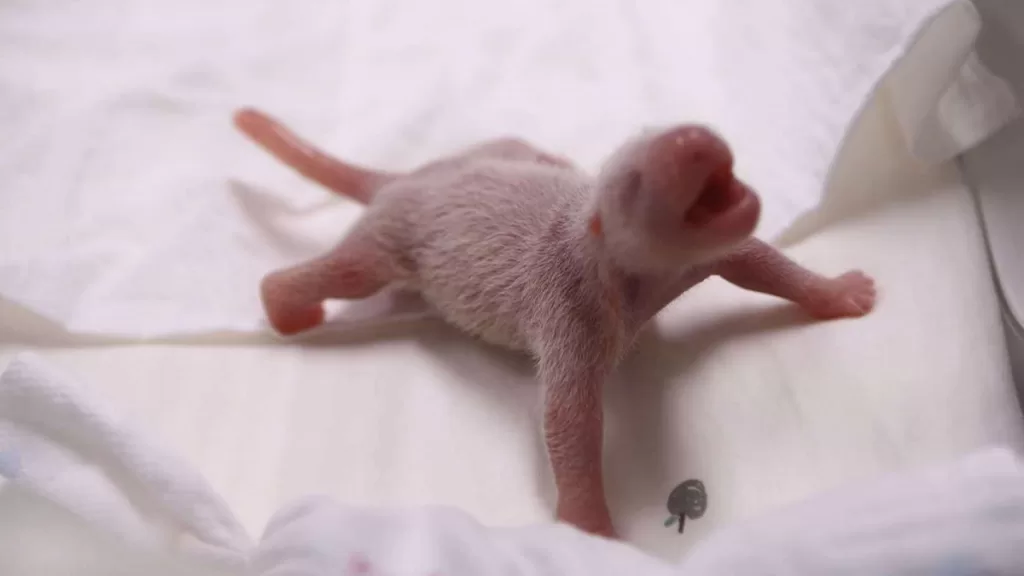When giant panda cubs are born, their average weight is only about 100 grams, resembling a small hairless mouse. Additionally, their internal organs are not fully developed at birth, leaving them unable to regulate their body temperature or defecate independently. Scientists believe this phenomenon is a result of delayed implantation of the embryos in giant pandas.
What is Implantation?
In simple terms, implantation refers to the process by which the embryos of viviparous mammals embed themselves into the uterine lining of the mother. Once the embryo enters the uterine lining, it connects to the mother’s blood vessels, allowing it to gradually develop a placenta, umbilical cord, and various parts of the newborn’s body by absorbing nutrients from the blood. From the moment of implantation, the fetus begins to take in nutrients from the mother.
Research indicates that the average gestation period for giant pandas ranges from 60 to 200 days. Remarkably, the embryo only implants about a month before birth, resulting in insufficient time for the fetus to absorb maternal nutrients, leading to the underdevelopment at birth.
The delay in nutrient absorption by the cubs is not due to the mother panda’s negligence regarding the health of her offspring; rather, it is an evolutionary strategy to enhance reproduction. The harsh living conditions in nature are filled with uncertainty, leading wild animals to develop a more cautious survival strategy. Specifically, due to environmental factors, a mother panda may not always have access to ample nutrition. To ensure she can recover her strength and care for her young after giving birth, she cannot overexert herself during pregnancy.
Influence of Predators
In addition to nutritional needs, predators also impact the activity levels of wild animal cubs after birth. Herbivores such as horses, cattle, and sheep can stand and even run shortly after birth because they have easier access to food while being constantly threatened by predators. Consequently, these young animals typically develop more fully before birth. In contrast, carnivores like tigers and lions face fewer predators but must expend energy to hunt or scavenge for food. Carrying cubs can hinder the mother’s ability to run and hunt, necessitating an earlier birth.
Although giant pandas primarily consume vegetation, their size allows them to fend off most carnivores. However, bamboo, their main food source, lacks sufficient nutrients, meaning that the cubs receive even less through maternal absorption.
Given these two factors, it is beneficial for giant panda cubs to be born as soon as possible.
How Do Giant Panda Cubs Grow After Birth?
After being born, giant panda cubs go through several significant developmental milestones:
- 1-2 Weeks After Birth: The areas where the cubs will eventually have black fur begin to darken.
- Around 1 Month: The cubs gradually grow black ears, eye patches, legs, and shoulder bands, resembling their mother more closely.
- 6-8 Weeks: The cubs start to open their eyes and grow teeth.
- 3 Months: By this age, giant panda cubs begin to show crawling abilities.
- 6 Months: The cubs have developed their baby teeth and start to eat bamboo shoots.
This growth timeline highlights the rapid development of giant panda cubs despite their initial underdevelopment at birth, showcasing their adaptability and the resilience of the species.




